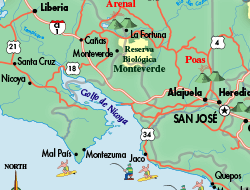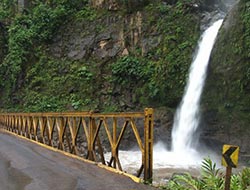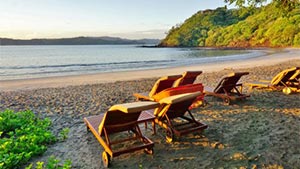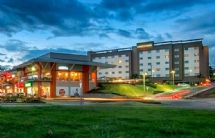Zoos establish captive breeding program to save the lemur leaf frog
The very rare & endangered Lemur Leaf Frog
Conservation experts from all around the world have contributed to efforts to save the lemur leaf frog, a unique tree frog species from Costa Rica that sits on the brink of extinction.
The species, the scientific name of which is Hylomantis lemur, was originally found at many sites throughout Costa Rica, Panama and northern Colombia. These creatures usually make their home in tropical or subtropical forests, particularly in moist regions fed by rivers or freshwater marshes.
Unique Shape
Unlike most other frogs found in Costa Rica, the lemur leaf frog is set apart by its unique feet, which do not have any webbing between the toes. The frogs are generally very small, measuring no more than two inches long, and tend to appear very frail due to their thin arms and legs and overall lack of musculature. Because of this lack of muscle tone, they tend to move very slowly, often walking hand-over-hand.
Their bodies are primarily a bright lime green to lemon yellow hue, and they are best-known for their large bulging eyes. The species' irises are a silvery white color, and they are ringed by a circle of black.
Chytrid Fungus
Although this species was once widespread, it has been reduced to a single site in Costa Rica. Scientists believe that the lemur leaf frog largely fell victim to the chytrid fungus, a disease-causing organism that has led to the extinction of many amphibian species. In addition, the animal's current habitat is under pressure from the harvest of timber, putting the species in even more dire straits.
Helping Entities
In an attempt to save the lemur leaf frog from extinction, several institutions around the world have collaborated on a conservation program that involves protecting it in the wild, studying it, and establishing a captive breeding program to ensure its survival. Institutions such as the Manchester Museum, University of Salford, and the Bristol Zoo in England, are all working with specimens that were bred in captivity. Moreover, support by the University in Costa Rica and Norden's Ark in Sweden have contributed to the survival of the lemur leaf frog as well.
Ultimately, the frogs born as part of the captive breeding program will be raised to maturity and form a safety net for the species incase frogs in the wild disappear. These will not be reintroduced, but one of the most important parts of the project is the involvement of the Costa Rican Amphibian Research Centre who are protecting and conserving the wild population in Costa Rica.
7 Days / 6 Nights
Starting at $978 per person
10 Days / 9 Nights
Starting at $1,440 per person











.jpg)
.jpg)


.jpg)
.jpg)

